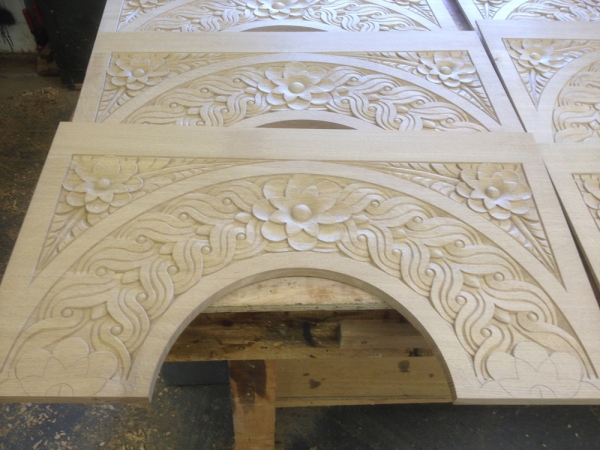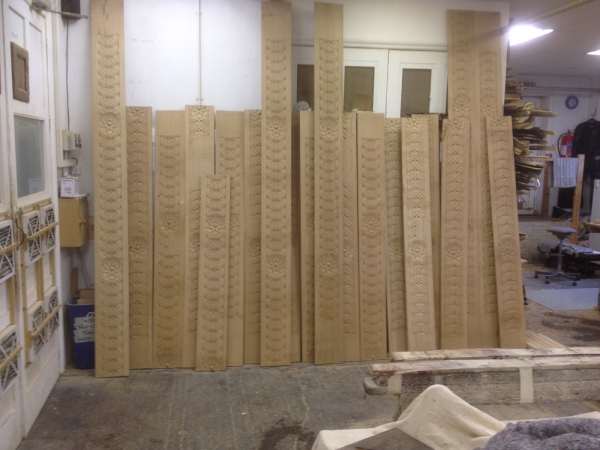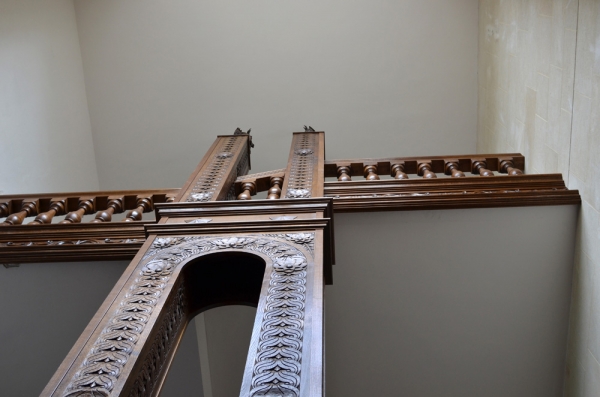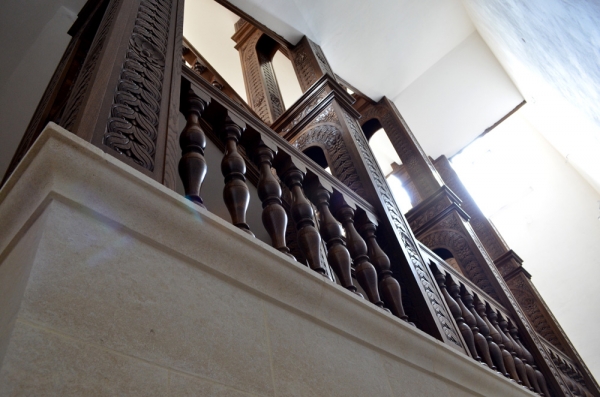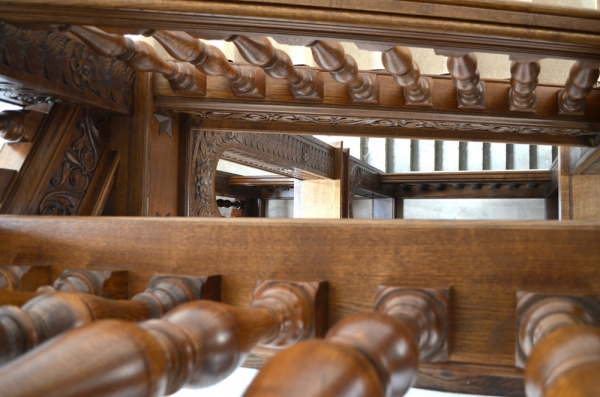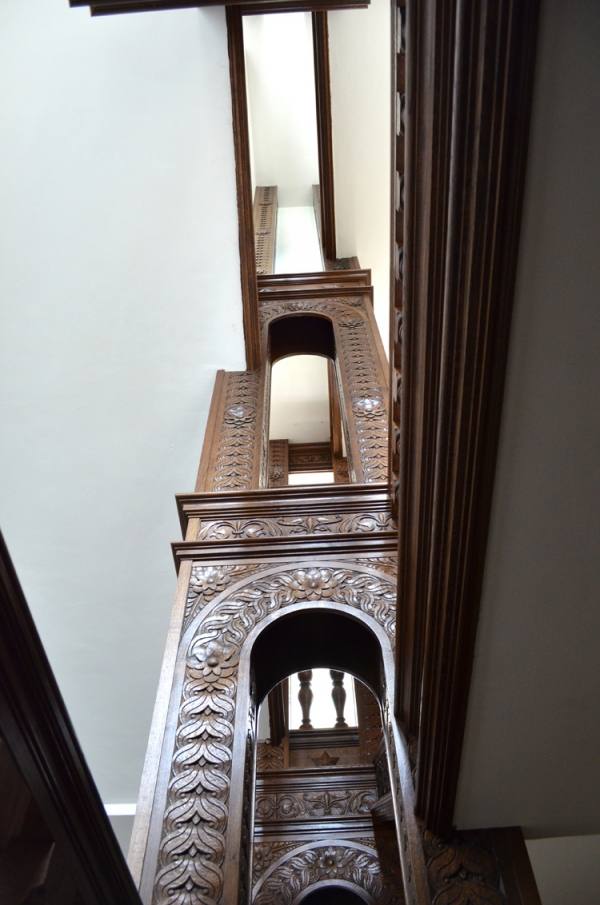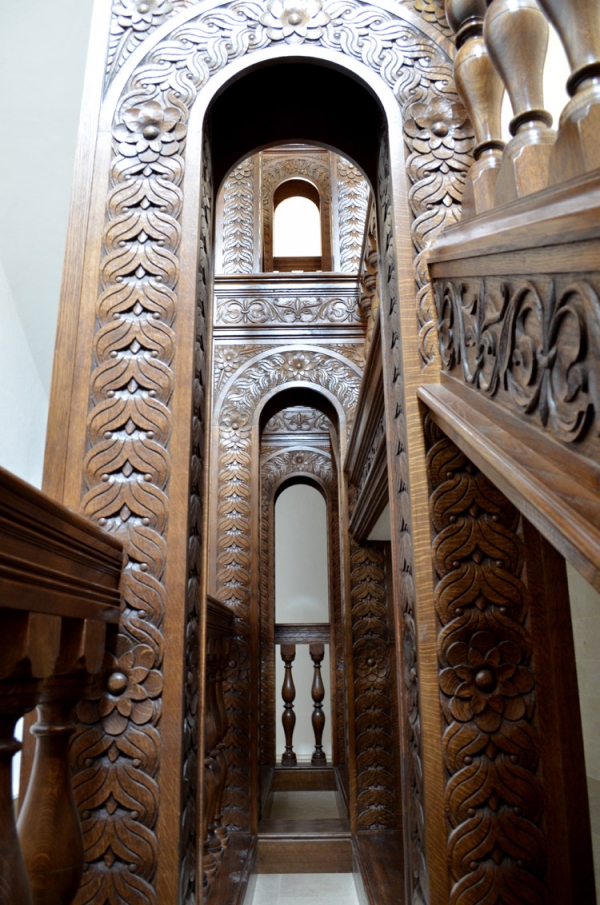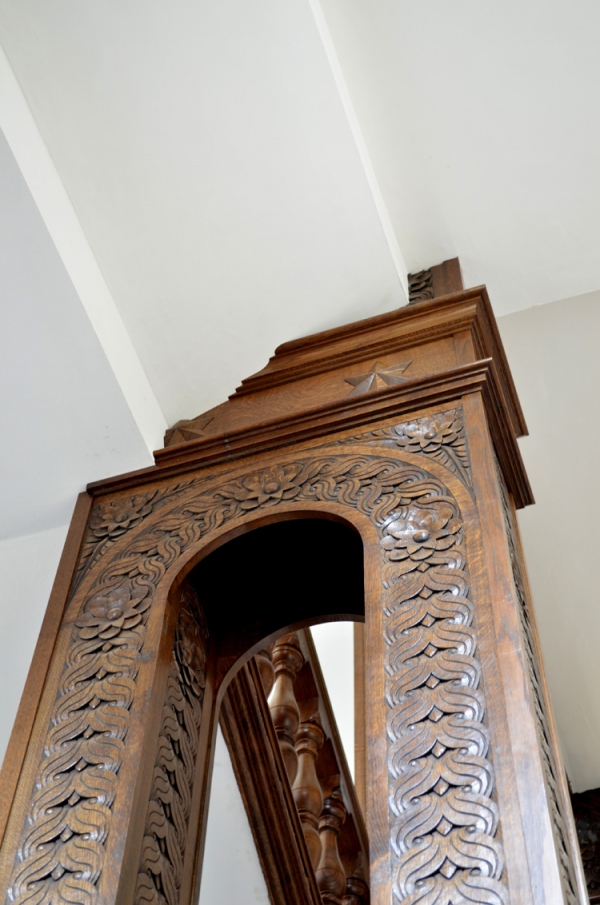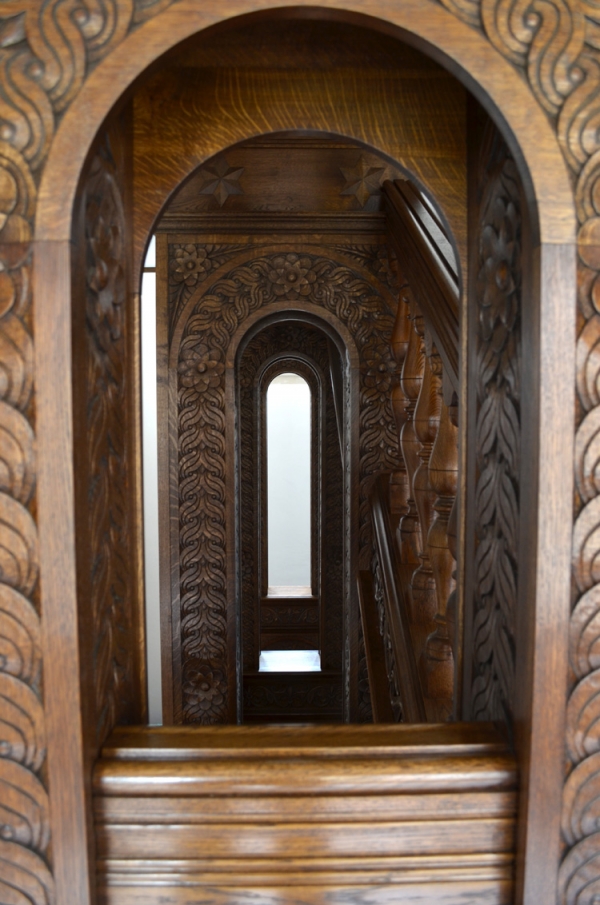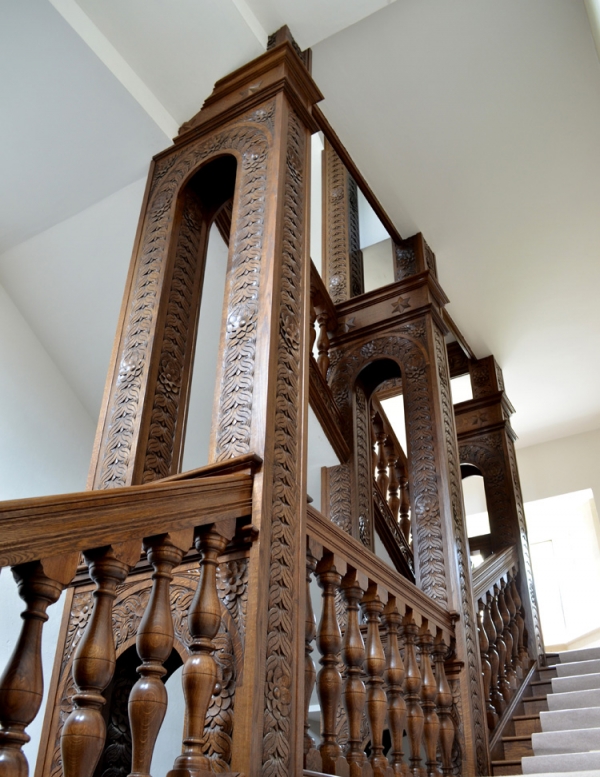Award Winning Hand Carved Staircase: Bespoke Oak Staircases
Deacon & Sandys are proud to have won the British Woodworking Federation Joinery Project of the Year for the bespoke oak staircase at Crosby Hall. Below are some extracts from the BWF Case Study.
Deacon and Sandys faced a huge challenge from the start. The hand carved oak staircase presented significant problems due to the unusual size of the sections of oak and the overall dimensions of the complete job. There are three doorways at different levels and the landing levels needed to coincide with each of them at the same time. Also, all of the risers over the whole staircase had to be exactly the same height as each other.
An oak stairway at English Heritage's Burton Agnes in Yorkshire forms the basic idea for this one at Crosby Hall on Chelsea Embankment. Many months of preparation were required to source the dry sections of oak big enough and clean enough to minimise movement and to allow for the elaborate carving required.
Deacon and Sandys were faced with a large open stairwell with a stone floor at ground level. To help keep the whole structure from being able to move at the base they made a frame flat on the floor into which the bottoms of the newel posts could be jointed. The complete frame was completely built into the stone flooring.
The hand carved detail on the cladding pieces had a pattern that had to line up over the height of the posts. With many different levels of the handrails, strings and landings it was very difficult to work out. They tried carving with a CNC router but could not achieve the detail required and so ended up carving most of the approximately 200 metres of post cladding by hand, as with the sides of the strings, which had an elaborate foliage design.
The handrails at 150mm x 130mm and the turned double baluster spindles at 110mm square, together with the strings at 300mm x 180mm presented a challenge, not only in the size and weight and sourcing the dry oak, but also in fitting the whole balustrading into the carved pattern on the posts.
Deacon and Sandys formed the landings which were bolted into the walls. The apron linings and strings fixed to that, were all morticed and tenoned and draw-bored into the newels.
The oak boarding on the landings had to match up exactly to the height of the floors that were already laid in adjacent rooms as there were no threshold strips to even out any difference in levels.
The complete work had to be stained and sealed to the customer's requirements and even this was difficult, because the changes in grain direction cause changes in the colour, so many adjustments had to be made to the strength of the stain as work proceeded.
The Woodworking Project of the Year Award recognises the very best in design, application or ability in joinery manufacture. The award was set up in memory of John Hedgecock, the former technical director at the BWF. It is a fitting tribute to a man whose dedication and knowledge of woodworking and joinery manufacturing was second to none.
The award recognises innovative, complex or simply beautiful projects and rewards excellence in our industry, providing the opportunity for UK woodworking companies to receive special recognition for exceptional technical achievement, design or innovation in joinery manufacture.


